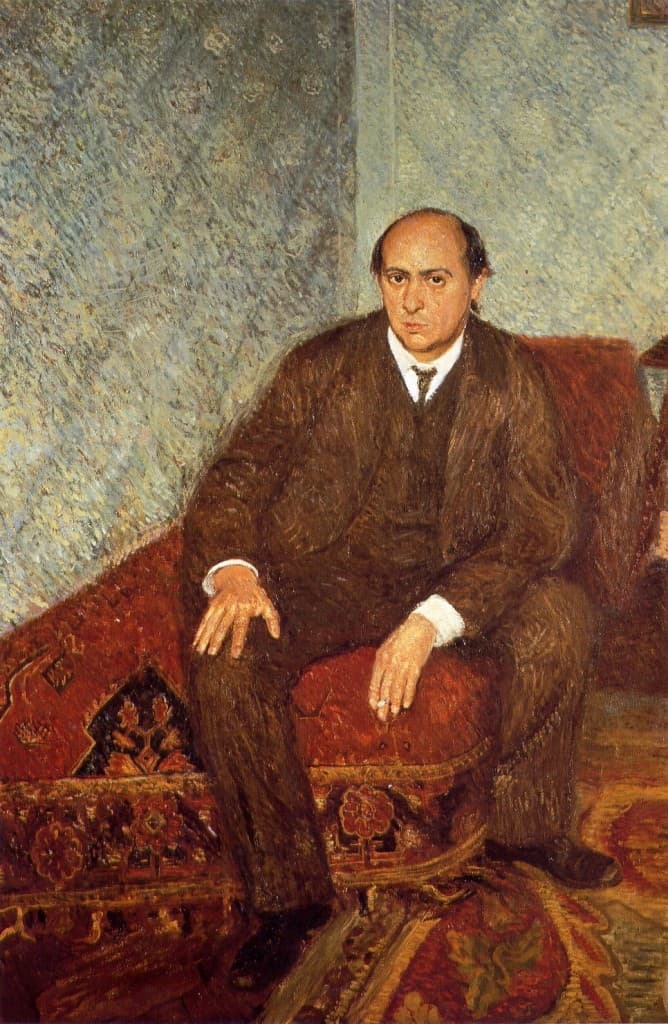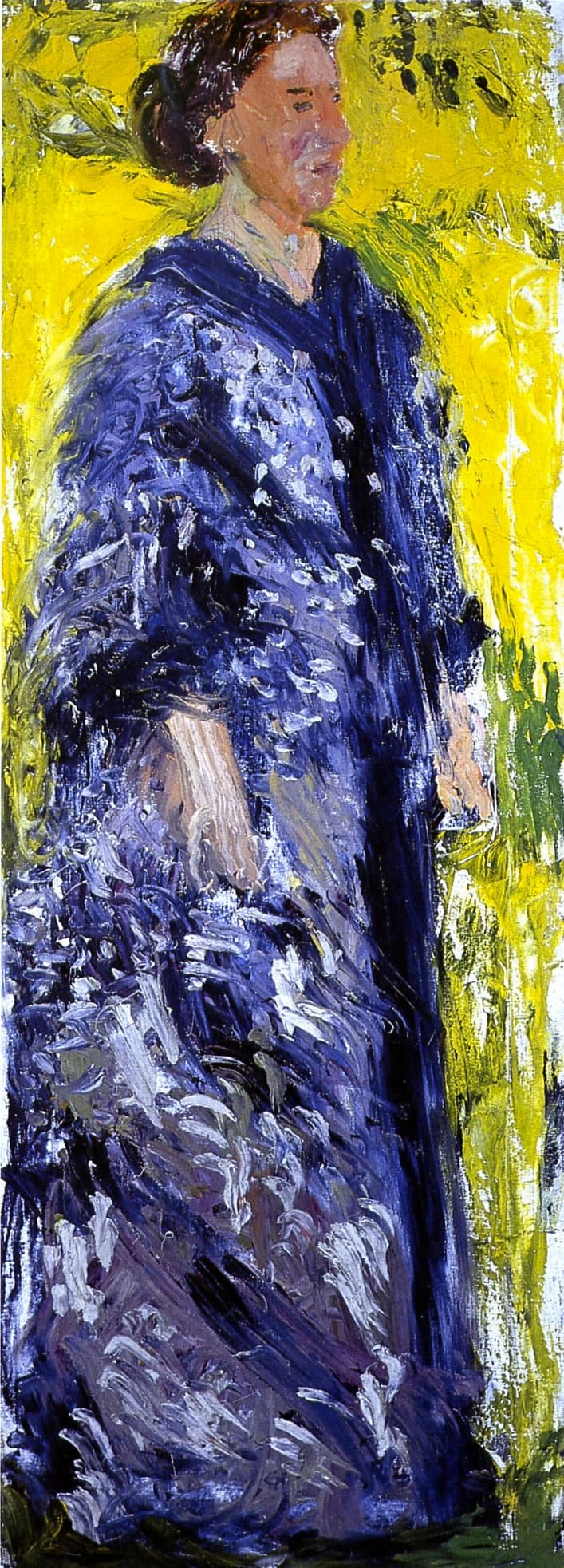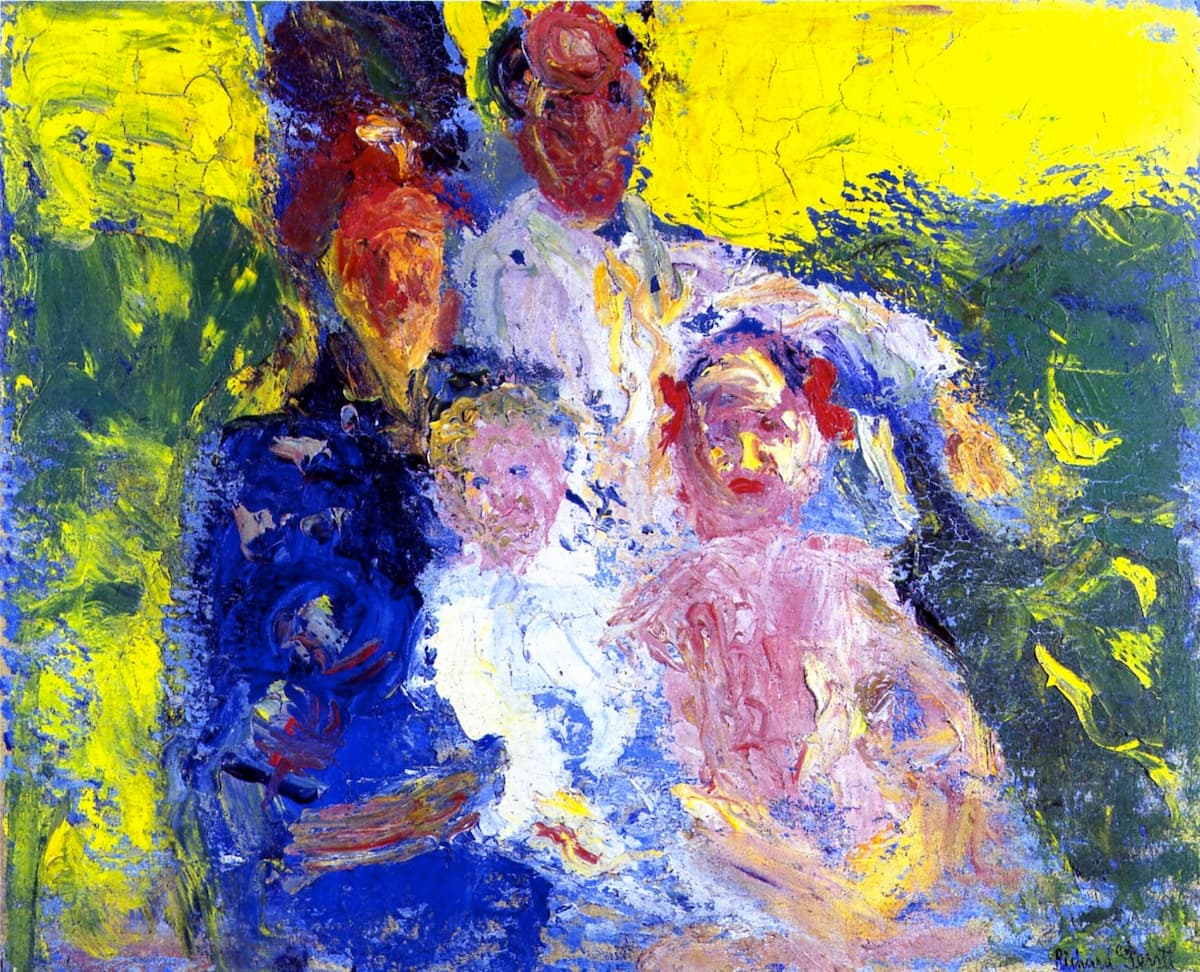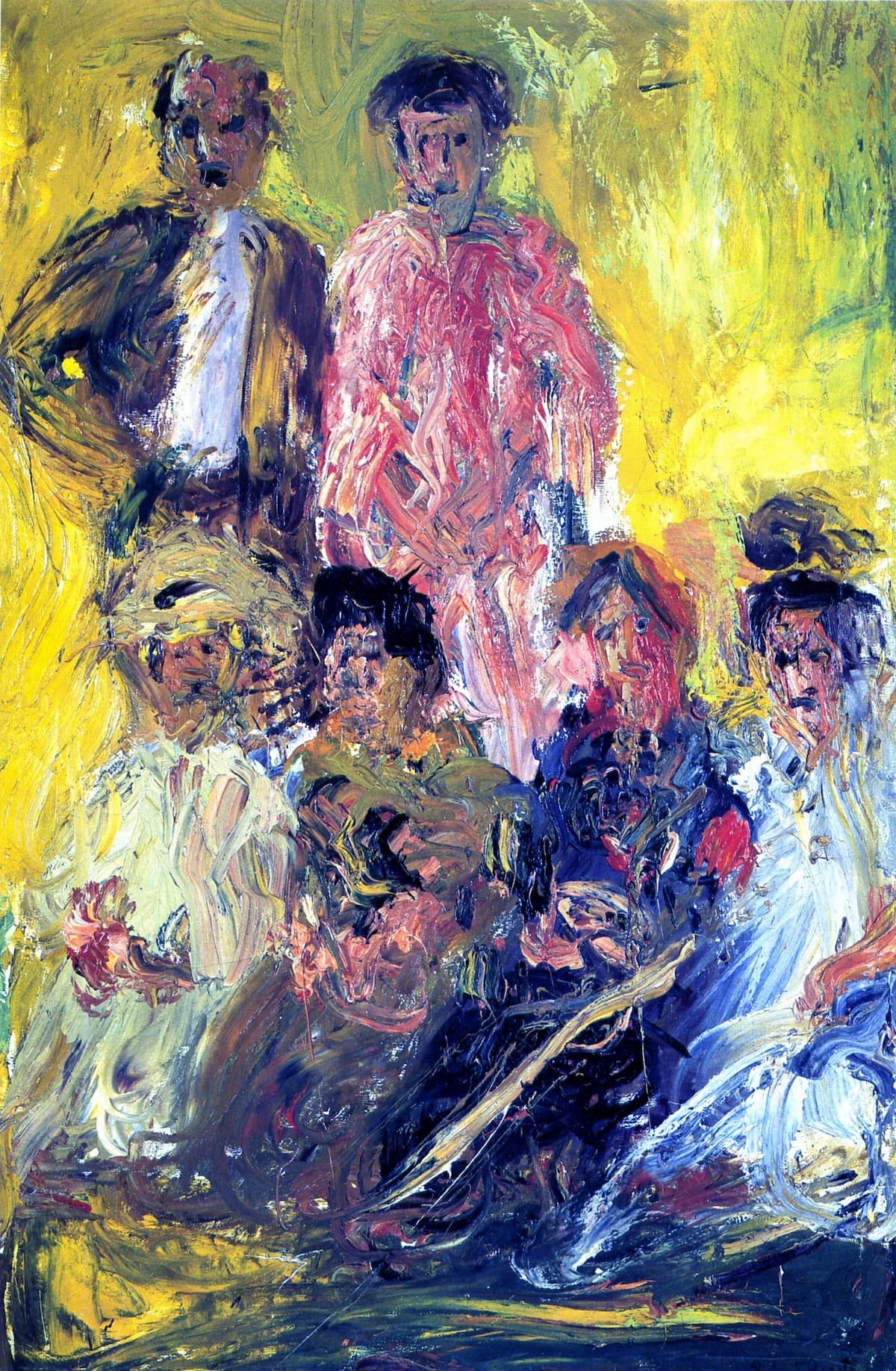There has been some speculation that the doomed love affair between the young and brilliant painter Richard Gerstl and Mathilde Schoenberg—mother of two and wife to Arnold Schoenberg—served as a catalyst for the composer’s historic leap towards atonality. While such a conjecture might be somewhat farfetched, Raymond Coffer, the leading authority on Richard Gerstl, suggests that there is “persuasive evidence that Schoenberg represented the consequence of his wife’s infidelity in several of his most creative works composed after Gerstl’s suicide.”

Richard Gerstl: Portrait of Arnold Schönberg
From Coffer’s research and thesis, we learn that this femme fatal story begins in the spring of 1906. Arnold Schoenberg had invited the 22-year-old Richard Gerstl, a painter, keen musician, student of philosophy and of Greek and Latin, into his home in Vienna. Schoenberg was hoping that the young art student would teach Mathilde—who was nine years younger than the composer—and himself how to paint in order to generate some extra income. As a kind of entrance exam, Schoenberg requested painted portraits of both husband and wife. Apparently, Schoenberg liked the painting as he began to recommend Gerstl to his circle of friends. In turn, Gerstl became a public supporter of Schoenberg’s music, steadily defending the composer against a vitriolic press and hostile audiences.
Arnold Schoenberg: String Quartet No. 2, Op. 10 (Jennifer Welch-Babidge, soprano; Fred Sherry String Quartet; Robert Craft, cond.)

Richard Gerstl: Self Portrait
Gerstl quickly became part of the Schoenberg circle, and together they spent two long summer holidays in the resort town of Gmunden, located within the Austrian Alps. As Coffer explained, “the Schonberg circle rented individual farmhouses in 1907 and 1908 on the eastern bank of the Traunsee, … and during the 1908 vacation Gerstl displayed bizarre, almost manic-depressive behavior. He produced a series of wild, astonishing, almost abstract portraits of the Schoenberg circle.”
Coffer suggested that “Gerstl’s expressionist approach served as the inspiration for the fourth movement of Schoenberg’s opus 10 String Quartet.” This movement is a vocal setting of Stefan George’s poem Entrückung, beginning with the line “I feel the air of another planet.” It is the first time, according to Coffer, that Schoenberg incorporated atonality in a major composition. We don’t know whether Schoenberg had knowledge or simply a premonition of the Gerstl/Mathilde affair, but at the end of August 1908, the lovers were discovered in a compromising position.
Arnold Schoenberg: Erwartung, Op. 17 (Jessye Norman, soprano; Metropolitan Opera Orchestra; James Levine, cond.)

Richard Gerstl: Mathilde im Garten
Mathilde tried to convince her husband that it was simply an innocent misunderstanding, but unable to do so, Gerstl and Mathilde fled to a hotel in Gmunden. From there, they hastily retreated to Vienna and stayed in a Bed and Breakfast in Nußdorf—a northern suburb of Vienna—for three days. Coffer explains that Schoenberg managed to track them down, and he convinced Mathilde to return to the family home. The affair, however, continued, and she visited Gerstl in his atelier. Largely through the mediation of Anton Webern, Mathilde was persuaded to leave her young artist “for the sake of the children.”

Richard Gerstl: Mathilde und Gertrud Schönberg
Gerstl, according to Coffer, had been living in a rented studio in the same building as the Schoenberg apartment. He now found himself completely excluded from the Schoenberg circle. “He suffered severe mental anguish for three months and increasingly blamed himself for the affair and its consequences. In November 1908, he could not take it any longer, and on the afternoon of a concert given by Schoenberg’s students to which he was not invited, the 25-year-old artist stabbed and hung himself in front of his mirror and surrounded by his canvasses.”
Arnold Schoenberg: Die glückliche Hand, Op. 18 (John Bröcheler, baritone; Berlin Radio Chorus; South West German Radio Symphony Orchestra, Baden-Baden; Michael Gielen, cond.)

Richard Gerstl: Schönberg Family
Although Mathilde and Arnold Schoenberg did reconcile, their relationship would never be the same. Mathilde died of adrenal cancer in October 1923, and only after Schoenberg’s death 35 years later would details of the three-way relationship gradually emerge. According to Coffer, “Gerstl had never exhibited in his lifetime, and his family was so ashamed of events that they left his paintings in storage until they were no longer able to pay the rent in 1931.” It was only through the efforts of Otto Nirenstein and his Neue Galerie that the Viennese public was treated to Gerstl’s works 23 years after the artist’s death.

Richard Gerstl: Group Portrait with Schönberg
Coffer writes, it became immediately clear “that here was an artist, who in the context of fin de siècle Vienna, was ahead of Schiele and Kokoschka.” Schoenberg presumably knew of the Gerstl exhibition through his brother-in-law Alexander Zemlinsky, who had visited the show. Although the doomed love affair between Gerstl and Mathilde had been kept a secret, it nevertheless spawned some of the most influential works of art in the 20th century. Among them not only Schoenberg’s Erwartung Op. 17, and Die glückliche Hand Op. 18, but also Zemlinsky’s Eine florentinische Tragödie, and Alban Berg’s Chamber Concerto of 1825.
For additional and more detailed information, please visit richardgerstl.com.
For more of the best in classical music, sign up for our E-Newsletter
Alban Berg: Chamber Concerto (Yoshio Unno, violin; Reiko Honsho, piano; NHK Symphony Orchestra; Wilhelm Schüchter, cond.)


Very interesting story
By the way, the pictures can be seen in the Leopold Museum, Wien Museumsquartier.
I had misunderstood and had the idea that the one who convinced Mathilde to go back to the family had been Alban Berg.